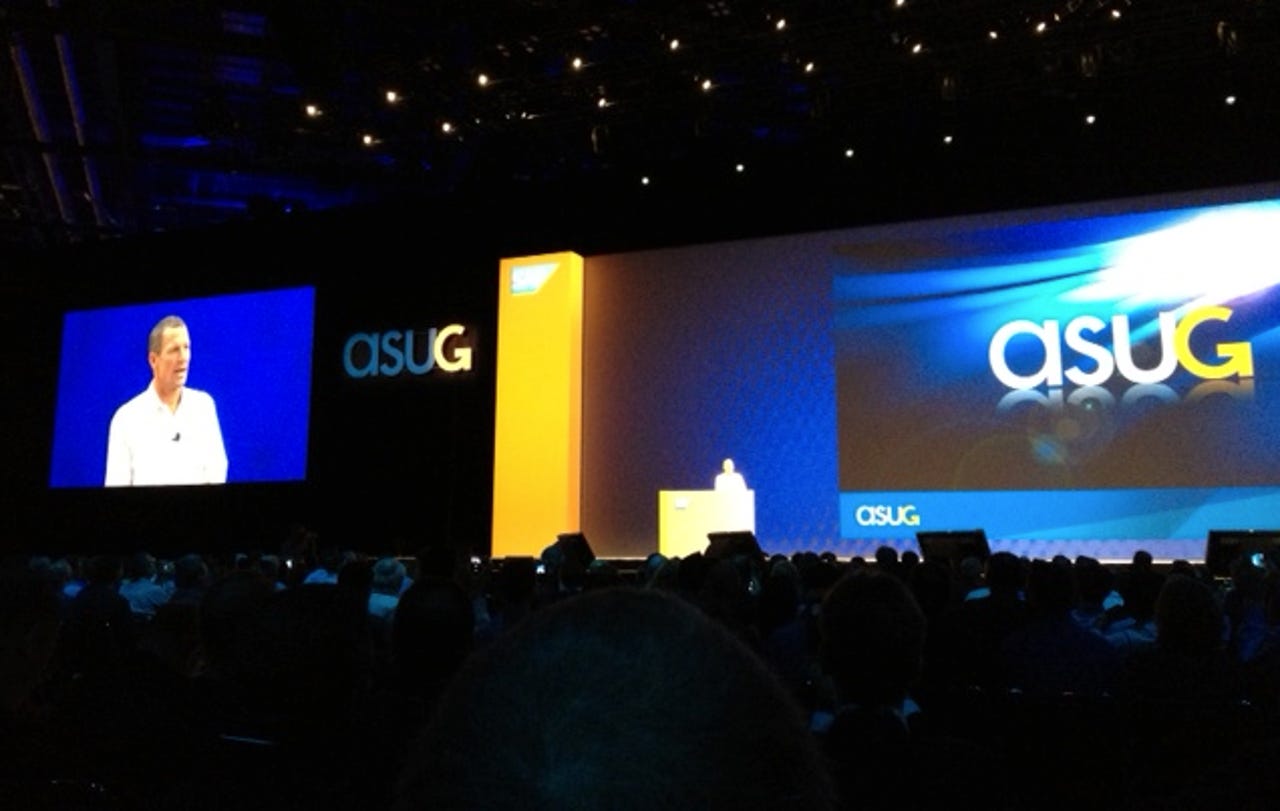SAP Sapphire kicks off with Lance Armstrong, motivational speeches


ORLANDO, Fla -- The SAP Sapphire Now conference here kicked off with a keynote presentation that featured heavy doses of corporate motivation and a cameo by seven-time Tour de France winner Lance Armstrong.
The presentation featured speeches by Americas SAP Users Group chairman Anthony Bosco, vice chair Mike Stoko and chief executive Bridgette Chambers and built upon a "Superman" theme. The DC Comics icon wasn't physically in attendance, but the references to the fictional man of steel were heavy -- an ASUG logo designed to imitiate the Superman shield; the use of an R.E.M. song by the same name; and oh yeah, testicular cancer survivor Armstrong, recounting his tale.
"We all are here to help our businesses be the best they can be, help our organization succeed and help become best-run businesses," Bosco said.
TECH CLASS HEROES
ASUG sees its members as supermen and women who are keeping pace with technological change and leading their businesses into the future. ("Superman didn't need a hero," bellowed a bald, cape-wearing man in the presentation's bizarre opening music video. Yes, an SAP music video. I want my SAP?)
Technology is shaping politics, culture and our daily lives, but it's the business world that can expect the most dramatic change, Bosco said, rallying his troops.
"We already live in an age where a Facebook posting, a YouTube video, or even a simple tweet can start a revolution," he said. "Such is the power of technology and the persuasiveness and pervasiveness in our world today."
Evoking Shakespeare -- The Tempest's "What's past is prologue" -- Bosco said the business "needs to get ready for a comeback" by hitching itself to technology platforms.
"Your competition never sleeps," he said. "Continuous improvement and transformation is key to success."
KEEPING PACE
Taking the metaphorical baton, Chambers rattled off a laundry list of statistics to illustrate the pace of technological change.
Among them:
- The world's information is doubling every two years; 1.8 zetabytes of it was created and replicated in 2011. That's the equivalent of 200 billion two-hour long HD movies, which would take someone 47 million years to watch.
- More than one-quarter of the world's more than 4 billion phones are smartphones.
- Fifty-seven percent of people communicate more online than in person.
- There are 800 million Facebook users; 200 million were added last year.
- There are 225 million Twitter users; the service adds a half million more each day.
- This year, YouTube reached 1 trillion playbacks.
"We are really at the beginning of a tidal wave of change in technology," she said. "The impact on business, the change -- it's immediate, and it's inescapable."
Businesses are seeing customers increasingly getting in touch using social media, and seek to get in on the action via Facebook and Twitter. Half of all CEOs now label social media as a high priority, Chambers said.
"When your CEO makes social media a priority, the way you handle your daily business? It's going to change -- in a very big, very social way," she said. "This is about corporate survival. To stay ahead of the technology curve, it is acknowledging that what you're doing today…is not going to get the job done tomorrow."
The problem: IT is not typically the innovator in a company.
"Why aren't smart customers who know they have an imminent market imperative able to stand up and say [that] they have a mobility strategy?" she asked. "A smart business is not going to start from scratch every time a new challenge emerges."
LEADING THE PELOTON
Despite Chambers' best efforts, it was Armstrong's entrance on stage right that helped wake the unresponsive (uncaffeinated? hungover?) audience. Though most audience members have likely heard the athlete's tale of his diagnosis with testicular cancer in 1996, his retelling perhaps did the most to inspire attendees.
In short: at age 25, Armstrong began suffering from various symptoms of the disease -- headaches, blurry vision, coughing up blood -- but largely ignored them with excuses. Once doctors determined how serious his condition really was, they tested him -- only to reveal eight to 10 golf ball-sized tumors in his lungs.
"It started this process of learning quickly in my life," he said. At the time, the Internet was primitive, and information on a less-talked-about disease was more difficult to find, he said.
A trip to an Indianapolis clinic and an MRI scan later revealed two lesions on Armstrong's brain. He went under the knife the next morning.
"[Surgeon Scott Shapiro] told me, 'It's just like carving a pumpkin: cutting off the top, pulling out the seeds, putting the top back on.' " Armstrong said. "Listen, I have five kids. So when Halloween comes around, it's not real cool when they want to carve pumpkins."
Fifteen years later, Armstrong's still cancer-free.
"I don't live in fear," he said. "I didn't think about it yesterday, I didn't think about it this morning, I haven't thought about it in weeks to be honest. But I live with respect. This disease, it could come back at any time."
So how's this connect to SAP and ASUG? In 2004, when Armstrong won the Tour de France for a record sixth time, sponsor Nike sought to commemorate the historic run with what would become his signature yellow Livestrong wristbands. Through the use of his athletic celebrity -- and eighty-six million or so wristband sales later -- Armstrong said he was able to "raise an army of people, almost like a social network movement."
Motivate. Inspire. And hopefully lead people into the future.